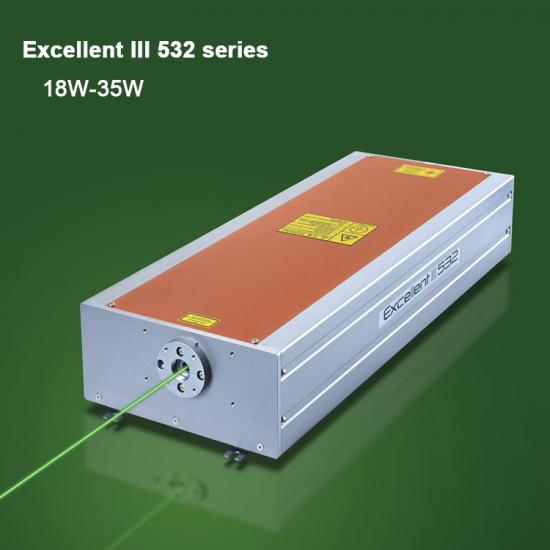재료 표면 세정에 RFH 산업용 나노초 고체 레이저 적용
Jul 27 , 2022재료 표면 세정에 RFH 산업용 나노초 고체 레이저 적용
표면 세척은 산업 생산에서 없어서는 안 될 중요한 공정입니다. 많은 부품은 사용 전이나 유지 관리 중에 청소해야 합니다. 예를 들어, 공작물 표면의 산화물 층은 표면 청결도와 거칠기를 높이기 위해 용접 전에 제거해야 합니다. 용접 공정에서 에너지 흡수를 촉진합니다.
전통적인 표면 세척 공정에는 주로 기계적 긁기, 화학적 산세척, 유체 세척, 초음파 세척 등이 포함됩니다. 작동 환경은 가혹하고 환경을 오염시키며 공작물 자체를 쉽게 손상시킵니다.

자외선 레이저 | 녹색 레이저 | 자외선 레이저 | 자외선 dpss 레이저 | 나노초 레이저 | UV 레이저 소스 | 고체 레이저
녹색 환경 보호 개념에 따라 현재의 새로운 청소 기술인 레이저 청소 기술은 점차 많은 분야에서 전통적인 청소 공정을 많은 이점으로 대체했습니다.
The mechanism of laser surface cleaning is to use the vibration of the laser pulse, the thermal expansion of the particles and the photolysis or phase change of the molecules or the combination of three effects to achieve the purpose of removing oxides, oil stains and other attachments on the surface of the material. When the high-energy-density beam acts on the surface of the object, the material attached to the surface of the object is rapidly heated and expanded under the action of the short-pulse laser, reducing or overcoming the resultant force between the surface material and the surface of the matrix material, making it detached, or in Under the high-energy beam, the surface material is instantly evaporated, vaporized or decomposed, so as to achieve the purpose of cleaning and removal. Since the peeling threshold of the surface material from the substrate surface is much smaller than the peeling threshold of the surface material of the substrate, the substrate itself will not be damaged after the surface material is cleaned by the nanosecond pulsed laser irradiation.
With its excellent performance, RFH industrial grade nanosecond solid-state lasers can be used for laser cleaning in addition to cutting, sub-paneling and drilling of PCB boards, ceramics, silicon wafers, glass and other materials.
It adopts a unique resonant cavity design, and the repetition frequency covers a wide range, from single pulse to 500kHz. The high repetition frequency can improve the efficiency of cleaning and increase the benefits for customers. The pulse width is small (<20ns@50kHz, 355nm), and the heat affected area is small during processing, which minimizes the impact on the substrate material. Taking semiconductor processing as an example, the surface of the base material is not clean enough to easily lead to chip failure. Efficient cleaning by nanosecond solid-state laser without damaging the material itself can effectively improve the yield of the product.
Compared with the traditional cleaning process, the use of industrial-grade solid-state lasers for surface efficiency is higher, the entire cleaning process does not require chemicals, and does not need to consume a lot of water, which is more in line with the current mainstream trends of energy saving and environmental protection, and laser cleaning has a wide range. Easy to control, metal, non-metal and other workpieces can be used, and can be widely used in high-end equipment manufacturing fields such as semiconductor industry, 3C electronics, automobile manufacturing, etc. .
In order to achieve a better cleaning effect, inert gas can be used to blow the cleaning area, which can speed up the cleaning progress, reduce the risk of the cleaned waste sticking to the surface of the material again, effectively improve the cleanliness, and make the application of laser surface cleaning more calm and efficient.
Using laser technology and cutting-edge technology to develop laser equipment and solutions that meet the needs of customer groups is the tireless pursuit of Nafei Optoelectronics. The market demand is constantly changing. RFH will continue to strengthen continuous innovation, promote the double improvement of the quality and processing efficiency of the researched and developed laser products, and bring more advantageous applications to the fields of laser surface cleaning and laser micromachining.